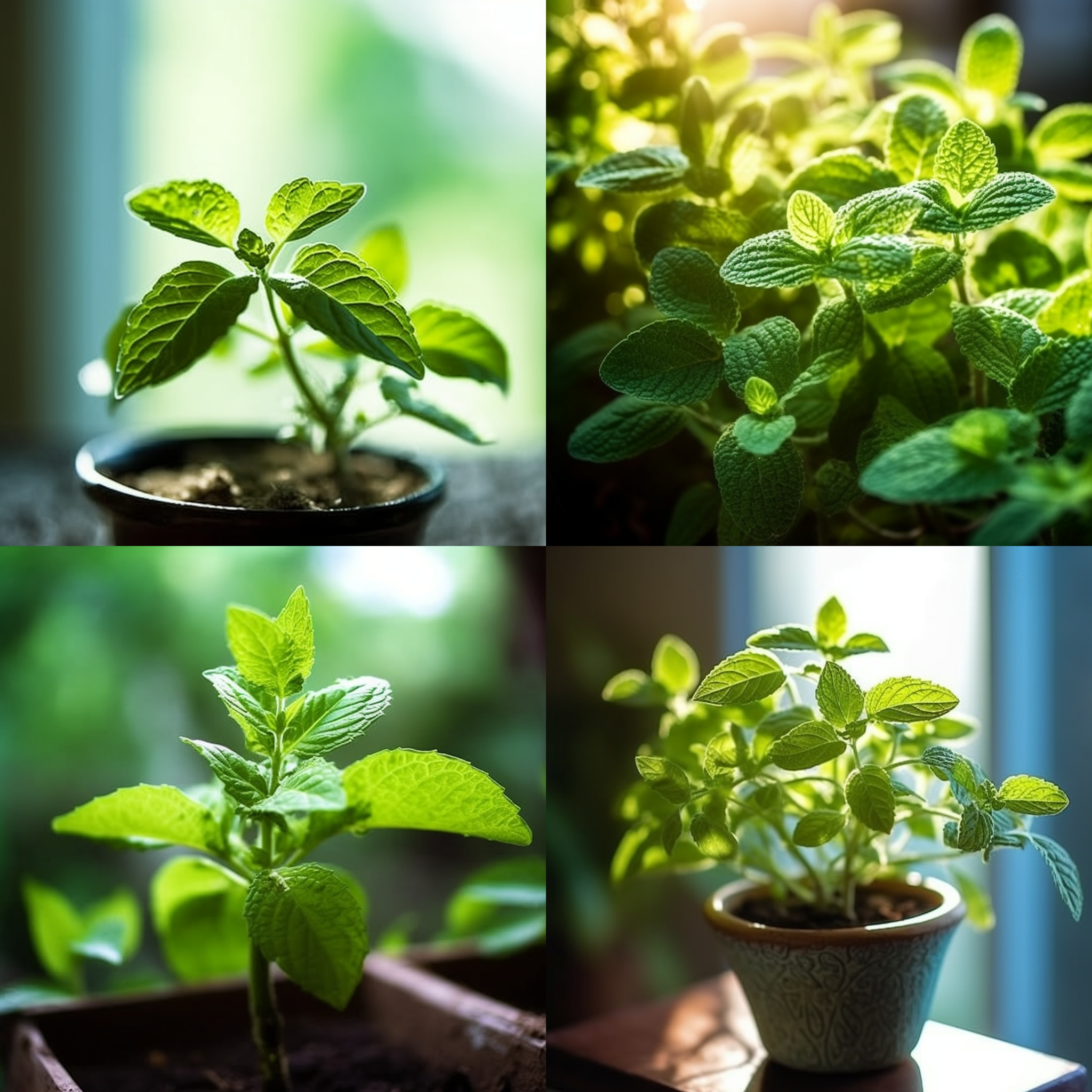Story of Day :
Contents
The Complete Guide and Care Tips for Mint Plants: Your New Favorite Herb
Do you love the fresh taste of mint in your tea, cocktails, or cooking? Then you should consider growing your own mint plant! Not only is it easy to cultivate, but it also has many health benefits and culinary uses. In this guide, we’ll cover everything you need to know about mint plants from choosing the right type to harvesting and storing them.
Types of Mint Plants

Mint is a family of herbs that includes many different species with varying flavors and fragrances. Here are some popular types:
- Peppermint – strong menthol flavor, often used in candies or toothpaste
- SpearMint – sweeter than peppermint with a more subtle fragrance; excellent for cooking
- Orange Mint – citrusy flavor perfect for iced teas or fruit salads
- Pineapple Sage Mint- pineapple flavor adds tropical notes to tea blends.

Growing Conditions and Care Tips for Mint Plants
Mint plants are hardy perennials that can thrive in most climates. They prefer moist soil with good drainage and partial shade exposure. If grown indoors make sure they get enough sunlight or grow lights as well as keeping the humidity level above 50%. Here are some steps to ensure your mint plant grows healthy:

- Choose a container: You can plant mint directly into garden soil but It’s best if planted indoors using containers instead especially when starting out because its easier to control conditions such as light exposure, soil pH levels etc.
- Pick the right soil: Use well-draining potting mix blended with composted manure if possible.Plant the mint root ball 2-3 inches below the soil line.
- Water regularly: Keep the soil moist but not waterlogged. Water when top inch of soil is dry.
- Prune regularly: Mint plants are vigorous growers and can take over your garden patch quickly if left unattended. Cut back stalks to promote new growth and prevent overcrowding

Pests and Diseases
Mint plants have few problems with pests or diseases, which makes them an easy herb to grow. However, here are some conditions you might face:
- Spider mites – tiny pests that cause yellowing of leaves; use insecticidal soap or neem oil to treat
- Rust disease – orange powder on leaves indicates fungal infection; cut off affected parts and keep air circulating around plant.
- Mint rust- a different type of rust disease specific to mint ; it is important to remove any infected foliage immediately as well as treating with a fungicide spray for future prevention.
Harvesting Mint Plants
You can begin harvesting your mint once it reaches about 6 inches in height This is usually between 8-12 weeks after planting . Here’s how:
- Take sprigs from upper part of plant, leaving lower leaves intact for continued growth.
- The best time to harvest is early morning before sun exposure forces essential oils out of leaves.
If you want fresh cuttings then rinse under cold water then pat dry with paper towels before using in recipes. You can also preserve them by drying or freezing.
Culinary Uses of Mint Plants
Mint is a versatile herb that can be used in a variety of recipes, both sweet and savory. Here are some popular culinary uses:
- Infused water or tea – Mint adds refreshing flavor to drinking water or hot tea.
- Cocktails – Mojitos and other drinks benefit from mint’s bright flavor.
- Soups and salads- salad dressings, pesto sauces , soups have new flavors when mint is added.
Health Benefits of Mint Plants
Mint has many health benefits thanks to its high levels of antioxidants and anti-inflammatory compounds. Here are some ways it can improve your health:
- Relieves Digestive Issues- Peppermint specifically helps soothe symptoms related to digestive issues such as bloating, gas, and indigestion.
- Natural stress relief: The aroma from mint leaves alone has been shown to reduce anxiety levels in people so incorporating them in aromatherapy is beneficial.
- Better oral hygiene- The antibacterial properties of spearmint help fight against gum diseases such as gingivitis.
The Bottom Line
Mint plants add flavor and fragrance to your home garden while providing many health benefits . With the right care tips like ensuring adequate sunlight exposure , pruning regularly etc you can enjoy a consistent supply all year round. From cooking with it fresh or dried for longer shelf life; there are numerous ways you can incorporate mint into your diets . Use this guide on different types available , pests/diseases control methods, harvesting & culinary uses alongside general care tips for planting out successful crops come harvest season and beyond.
